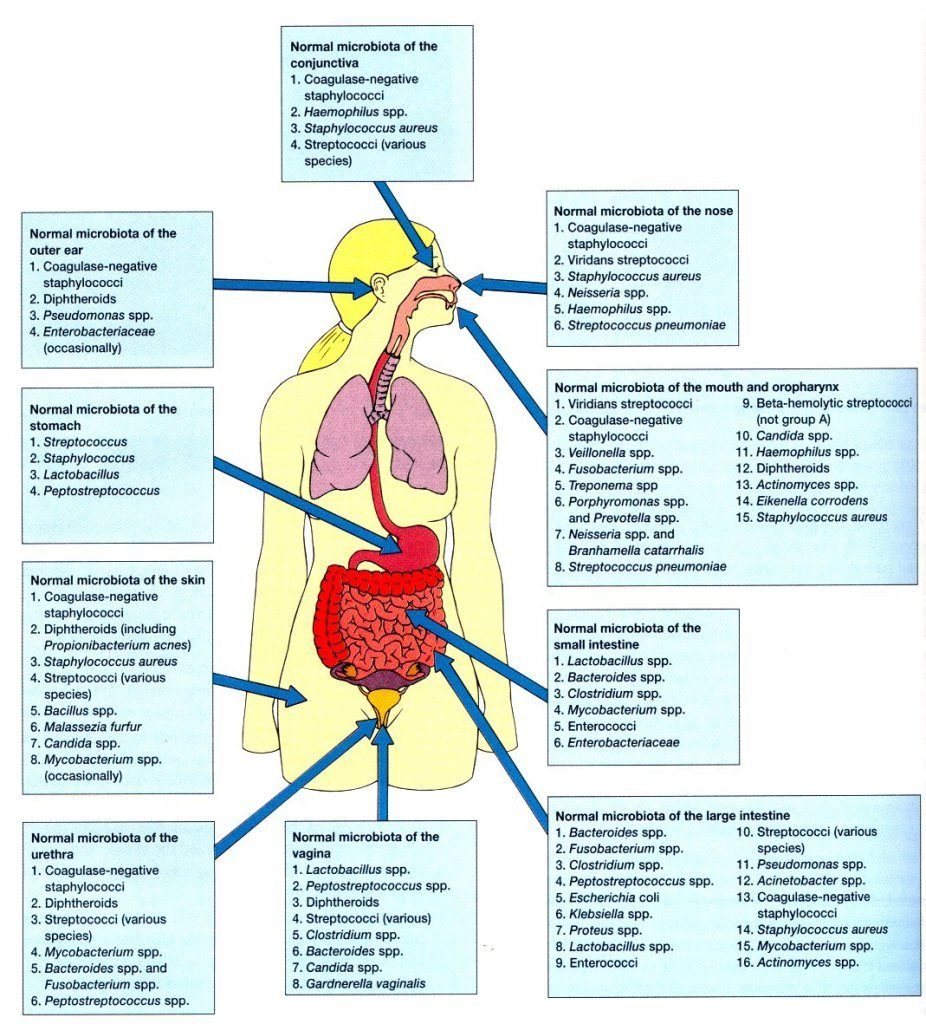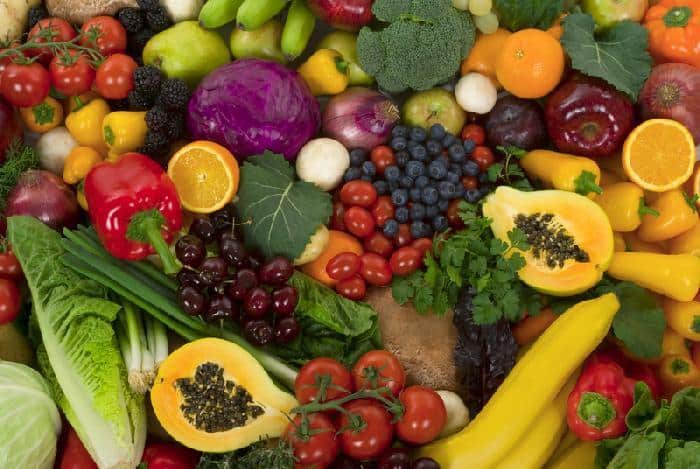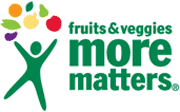The 4 Food Solution to the 100 Trillion Reasons You’re Fat, Sick and Depressed (Part 2)
The four food solution will help you build a healthy gut, strong immune system, better cognitive function, better body composition, and more. Surprisingly, it’s all about your microbiota.
PART 1 EXPLORED the integral, symbiotic relationship we humans have with about 100 trillion bacteria in and on us that make up our microbiome. If you have any doubt about how pervasive they are, check out this picture, courtesy of Kenyon College:
Yes, from mouth to anus, ears and skin — they’re everywhere, and they have a powerful impact on our health, good or bad.
If you’re so inclined, go study the various strains of bacteria housing themselves on and in various parts of our bodies up there in that diagram.
What you need to know is that there are basically two types of bacteria — those that support our health, and those that don’t. We need to feed the “good” critters so they will dominate the “bad” ones, so that we can optimize our health.
We must pay attention to that which we cannot see, but profoundly affects us.
We must eat and drink to nourish the “good”, and starve the “bad” in order to optimize our health.
Which begs the question:
“How do we nourish those good critters in us so that they can dominate”?
That question is answered here in Part 2, The 4 Food Solution to the 100 Trillion Reasons You’re Fat, Sick and Depressed.
You can consume a hundred different foods and drinks that are helpful for supporting the right kind of microbiota, but rather than try to remember that many, just learn about four — three categories, and one specific food.
You need to do this on a regular basis:
- Consume phytochemically-rich foods
- Consume probiotics
- Consume prebiotics
- Consume pea protein
Yes, there’s a lot of “consuming” going on, but that’s how you get these “Ps” into your gastrointestinal tract to feed the good critters – the beneficial microbes that help makes us lean, improve our immune system, help our brains work better, among many other benefits.
This is simple food solution. Let’s dig into each of them…
P#1: Eat Phytochemically Rich Foods
Phytochemicals are plant chemicals that have protective or disease preventive properties. Plants produce them to protect themselves, and — although they do not contain essential nutrients to sustain life — phytochemicals can protect us from disease.
There are thousands of known phytochemicals. Ones you may have heard of are lycopene in tomatoes, isoflavones in soy and flavanoids in fruits.
Here are some common ways that phytochemicals benefit us (source):
– Antioxidant protection – Most phytochemicals have antioxidant activity and protect our cells against oxidative damage and reduce the risk of developing cancer. Phytochemicals with antioxidant activity include allyl sulfides (onions, leeks, garlic), carotenoids (fruits, carrots), flavonoids (fruits, vegetables), polyphenols (tea, grapes).
– Hormonal action – Isoflavones, found in soy, imitate human estrogens and help to reduce menopausal symptoms and osteoporosis.
– Stimulation of enzymes – Indoles, which are found in cabbages, stimulate enzymes that make the estrogen less effective and could reduce the risk for breast cancer. Other phytochemicals, which interfere with enzymes, are protease inhibitors (soy and beans), terpenes (citrus fruits and cherries).
– Interference with DNA replication – Saponins found in beans interfere with the replication of cell DNA, thereby preventing the multiplication of cancer cells. Capsaicin, found in hot peppers, protects DNA from carcinogens.
– Anti-bacterial effect – The phytochemical allicin from garlic has anti-bacterial properties.
– Physical action – Some phytochemicals bind physically to cell walls thereby preventing the adhesion of pathogens to human cell walls. Proanthocyanidins are responsible for the anti-adhesion properties of cranberry. Consumption of cranberries will reduce the risk of urinary tract infections and will improve dental health.
How do phytochemicals improve your microbiome?
Dietary phytochemicals and their metabolites contribute to the maintenance of gut health by stimulating the growth of beneficial bacteria, and the inhibition of pathogen bacteria.
Many phytochemically enriched foods are also high in dietary fiber, which provide additional benefits, such as mineral absorption, potential anticancer properties, lipid metabolism and anti-inflammatory effects.
Here are the top six phytochemicals, the foods that are rich in them, how they might benefit you and some interesting side note facts, brought to you by:
Phytochemical
|
Benefit
|
Food Source
|
Side Note |
| Beta-carotene | Immune System
Vision Skin Health Bone Health |
Pumpkin
Sweet Potatoes Carrots Winter Squash Cantaloupe Apricots Spinach Collard Greens Kale Broccoli |
Focus on orange and dark leafy green veggies |
| Lycopene | Cancer (Prostrate)
Heart Health |
Tomatoes
Pink Grapefruit Red Peppers Watermelon Tomato Products |
Heating the foods make lycopene easier to absorb |
| Lutein | Eye Health
Cancer Heart Health |
Collard Greens
Kale Spinach Broccoli Brussels Sprouts Lettuces Artichokes |
Lutein is found in the macula of the eye |
| Resveratrol | Heart Health
Cancer Lung Health Inflammation |
Red Wine
Peanuts Grapes |
One cup of red grapes has about 1.25 mg of resveratrol |
| Anthocyanidins | Blood Vessel Health | Blueberries
Blackberries Plums Cranberries Raspberries Red Onions Red Potatoes Red Radishes Strawberries |
Focus on red and purple berries |
| Isoflavones | Menopause
Cancer (Breast) Bone Health Joint Inflammation Lower Cholesterol |
Soybeans | There are 47 mg of isoflavones in 1/2 cup of boiled soybeans |
Note that Spinach, Collard Greens, Broccoli and Kale are repeat offenders, meaning that they contain more than one phytochemical, and thus are particularly effective at improving the health of your microbiome, as well as providing the health benefits enumerated in the chart.
P#2: Probiotics
Probiotics are live bacteria and yeasts referred to as “the good” microorganisms in us because they benefit the body in so many ways, a few of which I described in Part 1.
If you eat a stellar diet that’s abundantly comprised of photochemically-enriched foods, you may not need to supplement with probiotics, unless of course you obliterate your microbiome with antibiotics.
Personally, in my pursuit of optimal health, I supplement with high quality probiotic supplements and eat the foods that contain them.
According to the Cleveland Clinic, probiotics contribute to our health by:
- Decreasing the number of “bad” bacteria in your gut that can cause infections or inflammation
- Replacing the body’s “good” bacteria (replacing the “good” bacteria that have been lost when taking antibiotics, for example)
- Restoring the body’s “good” versus “bad” bacterial balance, which then helps to keep your body functioning properly
Probiotics that are naturally found in your intestines include:
Saccharomyces boulardii (a yeast) and bacteria in the Lactobacillus and Bifobacterium families of microorganisms. (Outside of the body, Lactobacillus acidophilus is the probiotic that is found in some yogurts.)
Foods that contain probiotics include:
Some juices and soy drinks, fermented and unfermented milk, buttermilk, some soft cheeses, miso, tempeh, kefir, kim chi, sauerkraut, and many pickles. And, of course, the most famous probiotic food, yogurt.
Supplements you can take include (aff links):
Dietary probiotic supplements available in capsules, tablets, powders and liquid extracts. A commonly used supplement is acidophilus, which is available from several supplement manufacturers. Although I’m intrigued by what may be the superiority of expensive probiotic supplements, typically I use a good bang-for-the-buck supplement like Jarrow Formulas Jarro-dophilus EPS:
This Jarrow probiotic supplement contains five billion cells per capsule of some of the most beneficial bacteria, as shown below:

Jarrow Formulas Jarro-dophilus EPS
Of course, if you have digestive problems, take antibiotics, or think that a Big Mac is health food, you may want to get the best probiotics money can buy.
P#3: Prebiotics
OK, so now that you’re ready to gulp down probiotics every day, how are you going to feed them? Hey, you feed the cat, the dog, the kids — gotta feed that bacteria.
You feed them with prebiotics. Prebiotics are fuel for bacteria. Probiotics are the bactertia, and prebiotics are their favorite food source.
Prebiotics are non-digestible or partially digestible “functional” foods — largely fiber — that help grow healthy bacteria in the colon, and thus promote better overall health. They’re considered functional foods because they provide health benefits that go beyond basic nutrition.
Prebiotics are found in high amounts in breast milk, which work to optimize the numbers of beneficial bacteria in a baby’s intestine, a really good reason to be breast fed. Obviously, most of us don’t stay on that gravy train for long; thankfully, there are other sources.
Common foods rich in prebiotics include whole wheat, onions, chicory root, Jerusalem artichoke, and beans.
The best prebiotic fiber is inulin, also known as chicory root fiber. Chicory root fiber is added to many foods, including snack bars, yogurts, and beverages. You can also supplement with inulin itself, as I do.
Most people do really well when ingesting prebiotics, but some – perhaps 10% — don’t. Typically, this population has small intestinal bacterial overgrowth. You may be in this minority if you get bloated, get gas and/or headaches after ingesting inulin.
Read more about prebiotics in Don Amerman’s article, Examples of Prebiotic Foods.
P#4: Pea Protein
Our last “P” is “pea protein”. Studies that examine how pea protein affects the micobiome are fairly recent and few. What’s being discovered, however, strongly suggest that pea protein powder stimulates the growth of healthy gut bacteria, particularly the lactobacilli and bifidobacteria strains.
When ingested, pea protein powder also alters the bacteria’s metabolites, increasing the levels of short chain fatty acids; namely, acetate, propionate lactate and butyrate. (You may recall from Part 1 that butyric acid is very beneficial to the immune system because of its affect on T cells.)
Although peas themselves are considered a healthy food, it’s the powdered form that is so nourishing to microbiota and us. The peas go through a hydrolysate process that reduces their peptide structures into a size more useable by our bodies. The result is an easily digestible powder that is about 80% protein, as compared to the 15% that whole peas provide, and it contains lots of the fiber that beneficial bacteria love.
Pea protein is a recent discovery for me — I’ve only been using it for about two weeks. I add it to my morning smoothie. The taste is pretty bland, but not offensive. Like with many supplements, there are several good brands; the one I’m now using is Growing Naturals Protein Powder:
Typically, I blend the pea protein with another protein powder, Nutiva Organic Hemp Protein Hi Fiber so that I’m getting all the fiber I need to make my critters happy.
Your Takeaway
There are three things to keep in mind, and two things to do.
Remember this:
- There’s more to you than you think — 100 trillion more things, and they make up your microbiome.
- Your microbiome is a colony of microbes that live on you and in you, and they will affect your well being, good or bad.
- Some foods and drinks encourage beneficial bacteria to dominate, and some encourage the harmful bacteria to dominate.
Do this:
- Consume one or more of the “4Ps” of our “Food Solution” on a daily basis to feed the beneficial bacteria that make up your microbiome.
- Reduce your consumption of fast food, packaged food and sugary food, which feed the harmful bacteria.
My other articles on this topic:
How To Feed 100 Trillion Guests
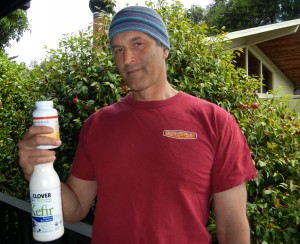
There’s more to you than you think. Like 100 trillion more. Your gut bacteria have an enormous influence on your health. Feed it right with synbiotics.
Can The Right Gut Bacteria Fight Obesity And Slay Metabolic Syndrome? (Part 1/2)
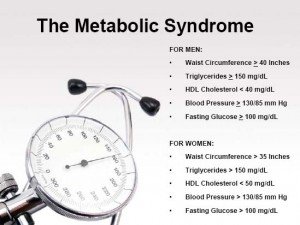
DO YOU have any idea what happens within minutes of eating a McDonald’s breakfast of an egg sandwich with cheese and ham, a sausage muffin sandwich, and two hash brown patties?
Continue reading
Discover Your Microbiome With The uBiome Test Update: uBiome in now out of business.
What lives on and in you, is ten times more numerous than your cells, and can profoundly influence your health without you having the slightest idea of their existence? There are surprises ahead, so go read and watch some video for a spell.
Last Updated on February 25, 2024 by Joe Garma


